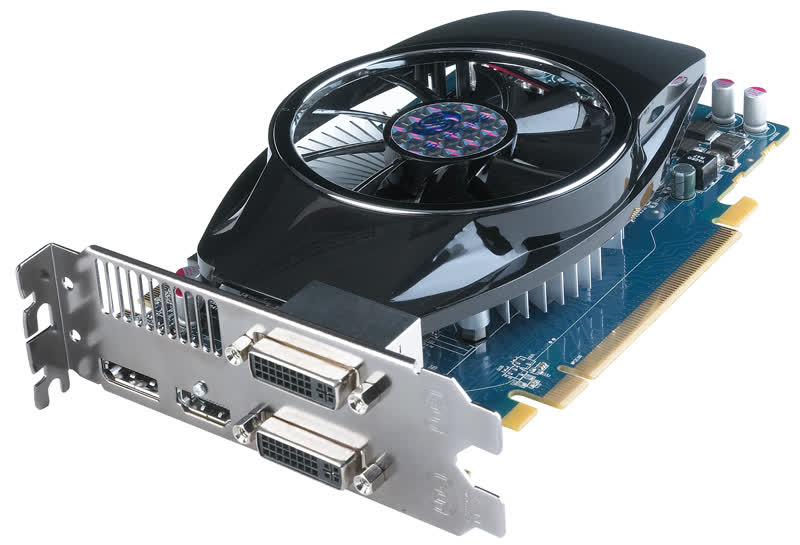
Starting with the Catalyst 8.3 drivers, Amd/Ati officially supports CrossFireX technology for the 3800 series, which means that up to four GPUs can be used in a pair of Radeon HD 3870 X2. This has no negative effect on performance. They communicate via a bidirectional bus that has 16 lines for a bandwidth of 2 x 4 Gb/s. The card only integrates a PCI Express 1.1 bridge to connect the two GPUs. Technically, this Radeon HD 3870 X2 can really be understood as a CrossFire of two HD 3870 on a single PCB. The processor achieved a peak single-precision floating point performance of 1.06 TFLOPS, being the world's first single-PCB graphics product breaking the 1 TFLOP mark. Radeon HD 3870 X2 (codenamed R680) was released on January 28, 2008, featuring 2 RV670 cores with a maximum of 1 GiB GDDR3 SDRAM, targeting the enthusiast market and replacing the Radeon HD 2900 XT. The Radeon HD 3690 was released early February 2008 for the Chinese market only.


All other hardware specifications are retained.Ī further announcement was made that there would be a Radeon HD 3830 variant bearing the same features as Radeon HD 3690, but with a unique device ID that does not allow add-in card partners in China to re-enable the burnt-out portion of the GPU core for more memory bandwidth.
#Ati radeon hd 3000 graphics card review series
The Radeon HD 3690, which was limited only to the Chinese market where it was named HD 3830, has the same core as the Radeon 3800 series but with only a 128-bit memory controller and 256 MiB of GDDR3 memory. The Radeon HD 38 became available mid-November 2007. The RV670 GPU is also the base of the FireStream 9170 stream processor, which uses the GPU to perform general purpose floating-point calculations which were done in the CPU previously. The Radeon HD 3800 series was based on the codenamed RV670 GPU, packed 666 million transistors on a 55 nm fabrication process and had a die size at 192 mm 2, with the same 64 shader clusters as the R600 core, but the memory bus width was reduced to 256 bits.

Of course, for a few more bucks, there’s a lot more performance to be had by opting for a card in the Radeon HD 5600 or 5700 series, but if you’ve got less than $100 to spend on a GPU, the Radeon HD 5500 GDDR5 edition should fit the bill nicely.Main article: Radeon R600 (HD 2xxx, HD 3xxx) Series Radeon HD 3800 We’d also give the Radeon the nod over the GT 240-performance is similar, but the 5570 will net end users a more flexible output configuration and DX11 support. The extra few bucks are well spent in our opinion, if you’re shopping for a card in this price range. Considering how close they are in price, we’re more intrigued by the Radeon HD 5570 GDDR5, due to it offering much better overall performance. And the Radeon HD 5570 GDDR5 comes in at around $80 - $90, which is right in line with the similarly performing GT 240. The Radeon HD 5550 GDDR5 can be found for approximately $60 - $80 depending on its memory compliment and cooler configuration. These cards will also be offered in half-height or passively cooled versions as well. Speaking of price, the Radeon HD 5500 series GDDR5 editions also arrive with price points right in line with the GDDR3/2 iterations-AMD is essentially offering higher-performing cards for the same price as the original version, which will obviously see a price drop as a result.
#Ati radeon hd 3000 graphics card review plus
First of all, they perform better than their GDDR3/2 counterparts, which is a big plus in their price segment.

The Radeon HD 5500 series GDDR5 editions aren’t barn burners, but they are welcome additions to AMD’s graphics card line-up for a couple of reasons. The Radeon HD 5550 obviously performs somewhat lower than the 5570 due to its lesser compliment of stream processors, texture units, etc., but it is also less expensive. Generally speaking, the Radeon HD 5570 and competing GeForce GT 240 perform about on par with each other, with the cards trading victories depending on the applications being tested. Performance Summary: Both the Radeon HD 5550 and HD 5570 GDDR5 editions offer decent performance, that’s a significant step up from integrated graphics solutions.


 0 kommentar(er)
0 kommentar(er)
